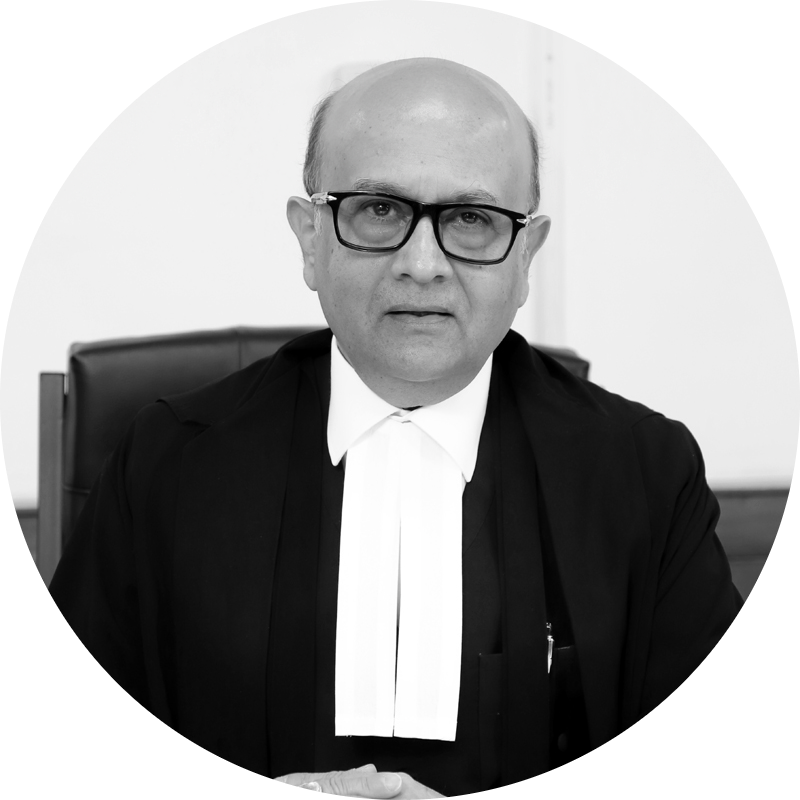Guidelines on Mitigating Factors in Death Penalty Sentences
In Re: Framing Guidelines Regarding Potential Mitigating Circumstances to be Considered While Imposing Death Sentences
The Court will determine whether same-day sentencing gives a convict “sufficient time” and “real and meaningful opportunity” to present all mitigating circumstances that affect sentencing
Pending
Parties
By Courts Motion:
Lawyers: Amicus Curiae Sr. Adv. Siddhartha Dave, Amicus Curiae Adv. K Parameshwar; Sr. Adv Raju Ramchandran; Adv.Pratiksha Basarkar; Adv. Bhavesh Seth; Adv. Shamim Irshad; Adv. Mohd. Irshad Hanif; Adv. Amar Kumar Raizada
Respondent:
Lawyers: AG R. Venkataramani
Case Details
Case Number: SMW (Crl.) No.1/2022
Next Hearing:
Last Updated: July 18, 2025
Key Issues
Whether same day hearing on sentencing grants “sufficient time” to the convict to present all mitigating circumstances?
What is the scope of mitigating factors to be considered during sentencing?
What constitutes real and meaningful opportunities given to convicts on sentencing?
Setting guidelines on institutional support required to ensure mitigating circumstances are adequately considered
Case Description
On 19 September 2022, the Supreme Court of India referred a suo motu writ petition to a Constitution Bench to address the lack of uniform guidelines on how to assess mitigating factors in sentencing.
The Court will determine whether same-day sentencing provides a convict “sufficient time” and “real and meaningful opportunity” to present all mitigating circumstances that may affect the sentence. The Court further intends to set guidelines on modalities for psychological evaluation and on building institutional capacity to gather essential background information on the accused.
The story so far
The 48th Law Commission Report (1972), which reviewed Code of Criminal Procedure Bill, 1970 had recommended that “the taking of evidence as to the circumstances relevant to sentencing should be encouraged, and both the prosecution and the accused should be allowed to coopеrate in the process.”
This recommendation was accepted by Parliament and was added as Section 235(2) of the Code of Criminal Procedure, 1973, (CrPC).This provision stipulates that a judge must hear a convict “on the question of sentence, and then pass sentence on him according to law.” Further, Section 367 gives power to the High Court to direct further inquiry or collect additional evidence which may have “bearing upon the guilt or innocence of the convicted person.” Section 368 empowers the High Court to confirm the sentence of death or pass any other sentence warranted by law.
In Santa Singh v State of Punjab (1976), a two-judge Bench of the Supreme Court had held that “it should be a matter of some anxiety to the court to impose an appropriate punishment on the criminal and sentencing should, therefore, receive serious attention.” It listed a few considerations that must be taken into account during sentencing, which required a separate stage of hearing. The factors included:
- The extenuating or aggravating circumstances of the offence
- prior criminal record, if any, of the offender
- age of the offender
- record of the offender as to employment
- background of the offender with reference to education, home life, sobriety and social adjustment
- emotional and mental condition of the offender
- prospects for the rehabilitation of the offender
- possibility of return of the offender to a normal life in the community
- possibility of treatment or training of the offender
- possibility that the sentence may serve as a deterrent to crime by the offender or by others
- current community need, if any, for such a deterrent
In Muniappan v State of Tamil Nadu (1981), a two-judge Bench of the Supreme Court held that a separate hearing for sentencing was not mere formality. It put the duty on judges to “make a genuine effort” to ascertain mitigating circumstances that have a bearing on the sentence. The Bench noted that “questions which the judge can put to the accused under Section 235(2) and the answers which the accused makes to those questions are beyond the narrow constraints of the Evidence Act.”
In Mithu v State of Punjab (1983), a five-judge Bench struck down Section 303 of the Indian Penal Code, which prescribed mandatory death penalty if a convict under imprisonment for life commits a murder. It held that a convict had a right to be heard on the question of sentence “before its imposition,” to ensure that judicial discretion could be exercised and mitigating circumstances be considered.
In Bachan Singh v State of Punjab (1983) the Supreme Court considered the issue of a separate hearing for sentencing in the context of capital punishment. A five-judge Bench upheld the constitutionality of the death sentence, adding that it must only be awarded in the “rarest of rare cases.” The Bench acknowledged the importance of a separate hearing as a safeguard which allows a convict to present reasons why the death penalty should not be imposed.
The Court in Bachan Singh also noted that Sections 235(2), 367 and 368 of the CrPC stood as “valuable safeguards” to ensure that “the entire evidential material bearing on the innocence as guilt of the accused and the question of sentence must be scrutinised with utmost caution and care by a superior Court.”
Further, Bachan Singh noted that in sentencing, the Court must not limit its considerations to the circumstances connected with the crime “but also give due consideration to the circumstances of the criminal.” Even Justice P.N. Bhagwati, who was the sole dissenter in the case, agreed on the importance of hearing the convict on the mitigating factors that should be taken into account during sentencing.
Allauddin Mian v State of Bihar (1989) added that conducting a hearing for sentencing on the same day as conviction would not be sufficient to give an “effective and real opportunity” to the convict. Recent decisions like Dattaraya v State of Maharashtra (2020) and Bhagwani v State of Madhya Pradesh (2022) also ruled against same-day sentencing in capital offences.
Contradictions in interpretation of same day sentencing
A contrary line of three-judge decisions, starting with Dagdu v State of Maharashtra (1977), found that same-day sentencing does not necessarily violate the mandate under Section 235(2).
In Ramdeo Chauhan v State of Assam (2001) the Court held that convicts were not entitled to the separate hearing being at a later time, and that the adjournment was awarded as per the judge’s discretion.
X v State of Maharashtra (2019) interpreted the law to mean that “a meaningful opportunity” was a must, but was “not conditional upon time or number of days granted”. Instead, it held that courts ought to assess the case qualitatively, not quantitatively. Further, it placed the burden on the convict to approach the appellate courts if a trial court failed to consider mitigating circumstances. It found that appellate courts were “not obligated” to adhere to Section 235(2) CrPC if the convict does not actively seek recourse.
Manoj Pratap Singh v State of Rajasthan (2022) found that sentencing after three days of the hearing was sufficient
Supreme Court’s reasoning to take Suo Moto cognisance of the case
The Court noted that all judgements agreed for the need for a “meaningful, real and effective” hearing. However, there was no clarity on what constituted “sufficient time” to be given to the convict.
While hearing arguments on sentencing in Manoj & Ors. v State of Madhya Pradesh, the Bench sought reports from the probation officer, jail authorities, a trained psychiatrist and psychologist on the mitigating circumstances in the case. The reports showed a lack of uniformity in the framework for considering mitigating circumstances, prompting the court to take suo moto cognisance of the case, on 2 May 2022.
On 19 September 2022, a three-judge Bench of CJI U.U. Lalit and Justices S.R. Bhat and Sudhanshu Dhulia found that it was “necessary to have clarity in the matter to ensure a uniform approach on the question of granting real and meaningful opportunity as opposed to a formal hearing, to the accused/convict,” and referred the case to a bench of five judges.



